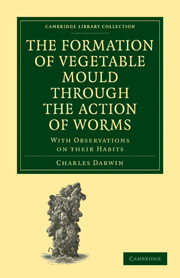|
The Formation of Vegetable Mould through the Action of Worms with Observations on their Habits
by Charles Darwin Published in 1881 326 Pages Thibault’s Score: 4/5 In the years after he published On the Origin of Species, Charles Darwin decided to undertake several case studies to explore the theory of natural selection. He decides to explore earthworm behavior, and observe how they affect the quality of soil and mould. To do this, he begins by building numerous large pots of dirt which he lays about his house. He then proceeds to observe the behavior and habits of the worms over the next 20 years, until his death. As usual, I love Darwin’s writing style. It is clear and non-repetive. The book is incredibly well-cited which is rare for a work of the 19th century. I also throughly enjoyed reading through Darwin’s thought process, observations, and experimentations. Most of the book consists of Darwin explaining his experiments, then explaining his observations from the experiments. His interesting observations about worms are myriad. He also observes the way they react to different soils, light, heat, sound and numerous other factors. In another experiment, he the worms numerous different foods at once, and seeing which one they eat first, then does a control by feeding the worms the foods one at a time. The thing that most surprised me is how intelligent the worms were. For example he notices that they are easier to catch when they are distracted by mating or eating, indicating some degree of intelligence. He also observed that the worms would drag leaves into their burrows in a logical manner to seal the entrances. Furthermore, when the worms were exposed to new plants, they learned how to drag them into their dens and eat them. I recommend this book for all biology lovers who want to learn more about worms.
0 Comments
Leave a Reply. |
Thibault SerletMost of my articles are book reviews, but I also write about many other topics. Archives
December 2023
Categories |

 RSS Feed
RSS Feed